After too much time spent ignoring the obvious, I’ve finally decided to take action and remove rust from tools. To my surprise, I was able to reverse years of iron oxide with supplies I already had on hand. It’s a relief to see tarnished tools brought back from the dead. It feels good to know that the little effort I invested in this project will benefit me for years to come.
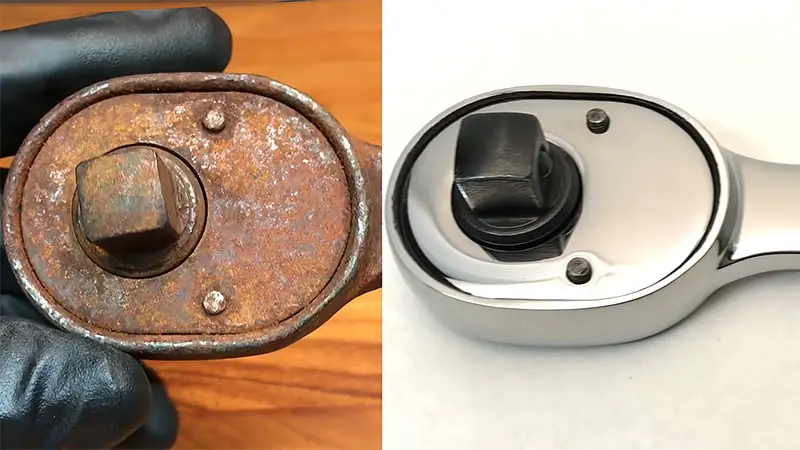
General Tips for Removing Rust from Tools
I don’t know about you, but it doesn’t take me long to rust my tools. Whether it’s indoor hand tools or outdoor garden tools, the metal objects in my care always manage to acquire icky brown patinas.
Keeping rust off tools is harder than it looks. Steel develops iron oxide when it is exposed to water and oxygen. You must take steps to avoid the development of iron oxide. You will need a clean, dry place where you can store your tools. If you want to fend off rust, you must also take the time to clean and dry your tools after every use.
The Power of Vinegar
Vinegar contains a good amount of acetic acid. This chemical compound dissolves iron oxide. Keep in mind that acetic acid is not particularly fast-acting. As such, you may need to soak your rusty object for 12 hours or more. In some cases, it might even take acetic acid several days to eliminate all of the rust.
WD-40
WD-40 Specialist Corrosion Inhibitor is one product you can use to preserve your metal surfaces. It sticks to metal even in moist and humid environments. Moreover, it comes with a straw-like applicator. This makes it super easy for users to apply the formula to the joints and crevices of tools.
Mineral Oil
Mineral oil is yet another reliable rust deterrent. It can be used in place of WD-40 and other rust inhibitors. The mineral oil serves as a protective barrier that keeps oxygen and water from coming in contact with the metal. You should reapply it regularly to ensure that your tools are well protected from rust.
Home Remedies
Here are the most effective homemade rust removal remedies.
Baking Soda
Baking soda is just one inexpensive pantry staple that doubles as a homemade rust remedy. You can mix it with water to create homemade rust-removal pumice. Allow the paste to sit on the surface of your tool for several hours. Use steel wool or some other abrasive metal pad to scrub away loose flakes and iron oxide residue.
Coca-Cola
Coca-Cola also makes an excellent rust remover. Just pour a liter or two of the soda into a large container, and let it soak. The rust should wash away like magic. You can also pour Coca-Cola directly onto a rusty object. Then use tin foil to rub away the iron oxide.
What makes Coke such an effective rust remover? It’s the phosphoric acid and carbonation!
Citric Acid
While most homemade rust remover recipes call for lemon or lime juice, you can also use water-soluble citric acid. This chemical compound contains high amounts of acetic acid. It’s a common cleaning solution ingredient. You can use it alone or add it to another ingredient. It’s just as biodegradable and safe as distilled vinegar.
Tin Foil
While tin foil isn’t strong enough to remove rust on its own, it does have excellent abrasive properties. In most cases, a crumpled ball of tin foil is going to work just as good, if not better than, a scouring pad.
Soft Bristle Brush
Soft bristle brushes and clean clothes are excellent scouring tools. They’re less abrasive than tin foil and scouring pads. You might even be able to use an old toothbrush or piece of cotton clothing instead of brushing one at the store.
Electric Sander
If you’re looking to remove thick rust, you might employ the help of an electric sander. An electric sander will help you remove flaky pieces of metal without using a bunch of elbow grease. While an electric sander may leave scratches behind, you can always use a piece of fine-grain sandpaper to clean up the blemishes.
Chemical Rust Removers
When homemade remedies don’t yield results, people often turn to chemical rust remorse. While these salutations may work, they are often chemically volatile, expensive, and dangerous.
We always recommend that you give the aforementioned pantry staples a try before moving onto commercial alternatives.
How to Remove Rust from Tools: Hand Tools
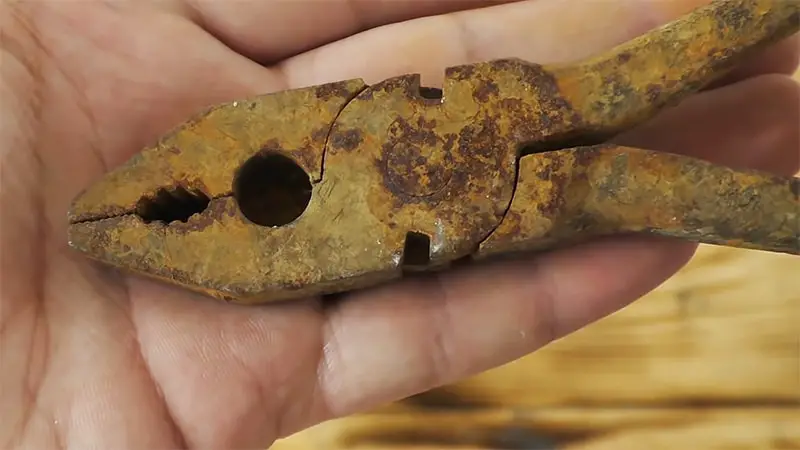
What You’ll Need
- Vinegar
- A large container (preferably plastic and large enough to hold fully submerged tools)
- Metal brush or steel wool
- Water
- Clean rag or towel
Step 1: Soak Your Tools
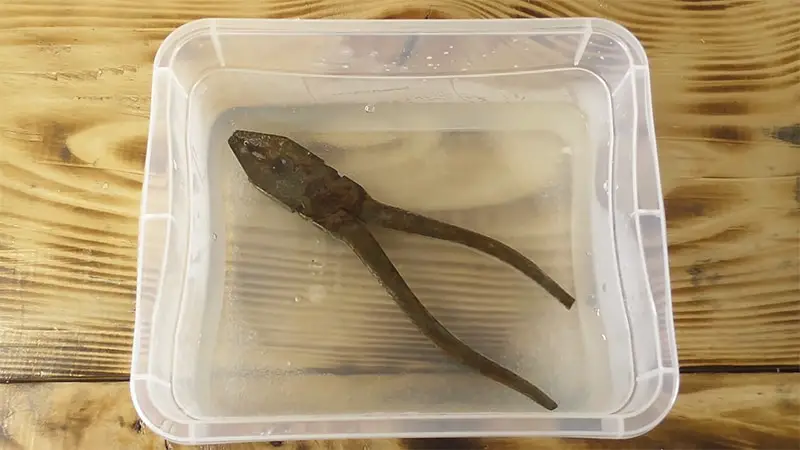
To start, prepare your tools a bath that consists of equal parts water and vinegar. We recommend that you use an old glass food container or mason jar. This way, you’ll be able to submerge the metal tips of the tool while leaving the rubber- or plastic-coated handles exposed.
Place your tools into the bath. Be careful as to submerge all of the metal. Allow the tool to soak for no less than 24 hours.
Step 2: Scour Remaining Rust
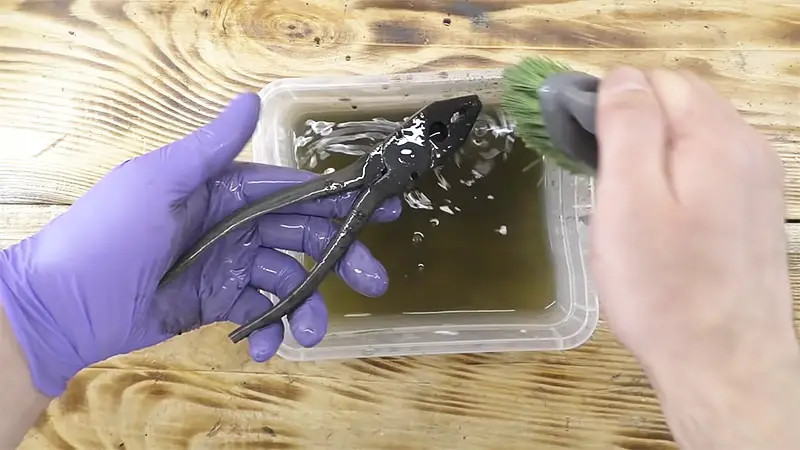
Once your tool has soaked for at least 24 hours, you can go ahead and check on its progress. You may notice that some of the rust has fallen into the vinegar and water mixture. This is promising, but you still have some work cut out for you.
Carefully remove the tool from the vinegar and water bath. Place it on a hard, slip-resistant surface. Grab your metal brush or a piece of steel wool, and get to work manually removing any remaining iron oxide.
Step 3: Wash and Dry
Once you’re happy with your scouring progress, it’s time to clean and dry your tool. Use heavy-duty soap and water to rinse away any remaining traces of vinegar and iron oxide. Then dry your tool with a clean rag or towel.
Step 4: Lubricate
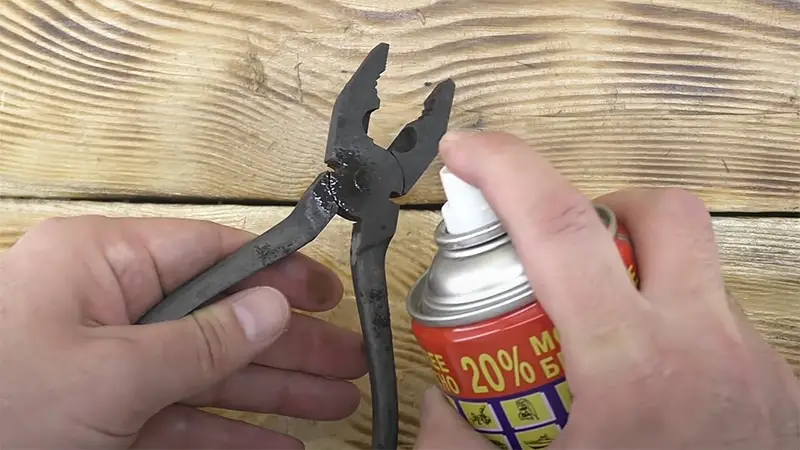
Apply a small amount of WD-40 to the surface of your tool. Use a clean, dry rag to rub it evenly across the surface of the metal. Wipe away any excess lubricant.
Step 5: Persist
Take the time to acknowledge how it was that your tools managed to develop rust in the first place. Maybe you left them outside on accident or simply failed to clean them off after an intense job.
You can prevent the further spread and development of rust by simply taking the time to clean and dry your tools after every use.
Make sure you have a clean, dry place where you can place the hardware when you’re finished with it.
How to Remove Rust from Tools: Garden Tools
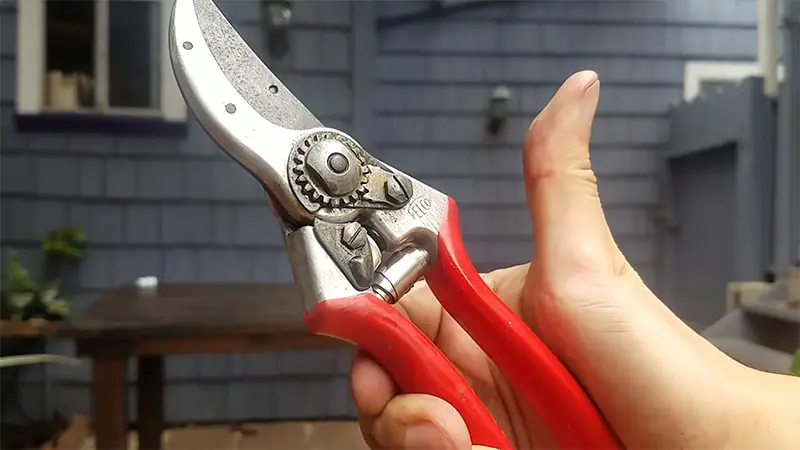
What You’ll Need
- Vinegar
- Water
- Container for submerging
- Heavy-duty soap
- Rags or towels
- W2-40 or mineral oil
Step 1: Make a Vinegar Bath
Mix equal parts distilled white vinegar and warm water. Place them in a container that is large enough to accommodate the metal portion of your tool.
Step 2: Submerge
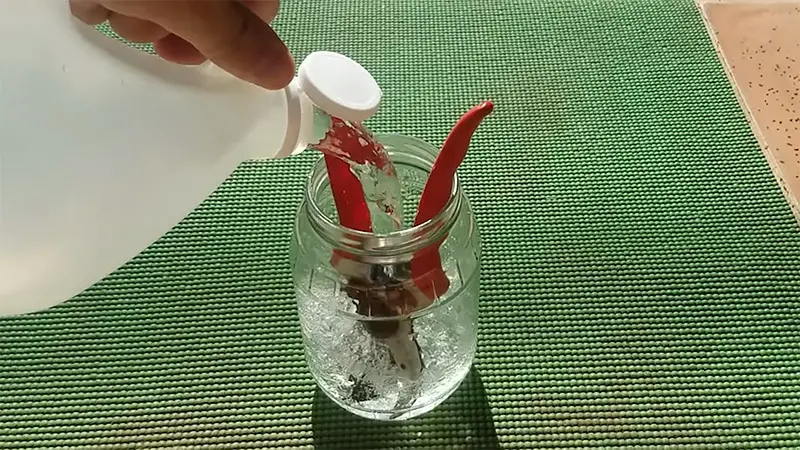
Place your rusty tool into the vinegar bath. If your soaking container is large enough, you may be able to soak more than one tool at the same time. Allow each tool to soak for 24 to 48 hours. Make sure that all of the metal pieces are fully submerged.
Step 3: Use Some Elbow Grease
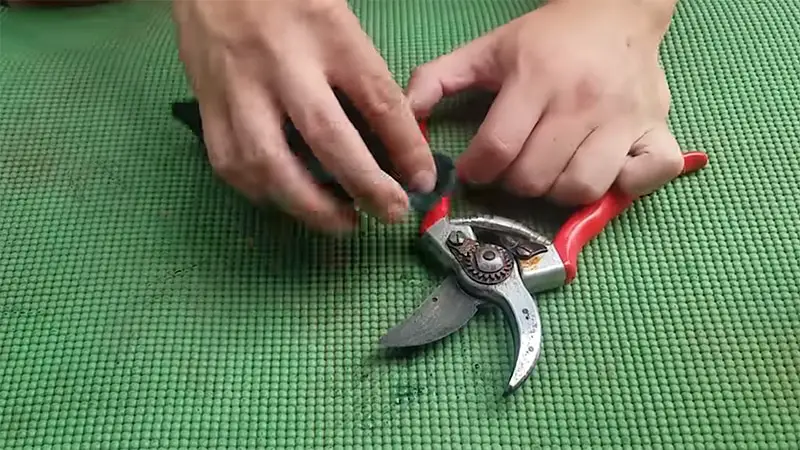
Use a piece of steel wool or crumpled up tinfoil to scour the more stubborn sections of rust. Rub whatever scouring tool you are using over the rust in a circular motion. You may notice pieces of rust flaking off as you do this. When you’re finished, inspect the surface of the tool for rust. If rust persists, soak and scour your tool a second time.
Step 4: Rinse and Dry
When you’re satisfied with the results of your rust removal bath, carefully wash your tool with soap and water. Place the freshly cleaned tool on a peg or notch to dry.
Step 5: Lubricate
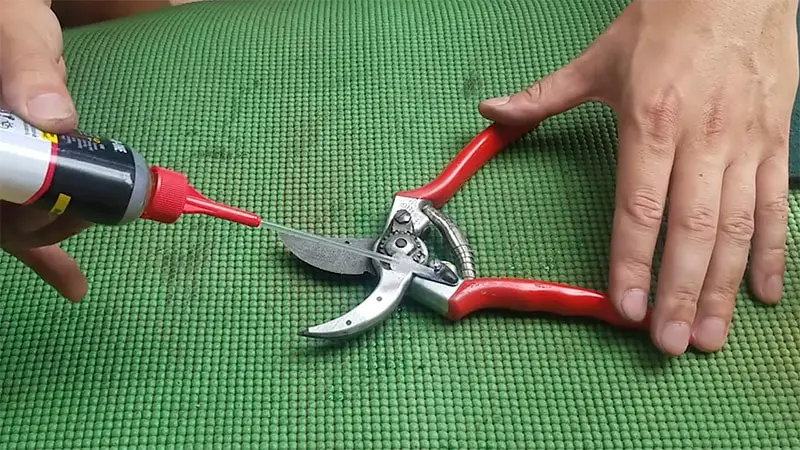
Now, use WD-40 or mineral oil to lubricate the metal surfaces of the tool. This will help protect the metal from further corrosion.
Preventing Rust
Once you’ve successfully removed the rust from your tools (or coins), it’s time to step up your rust prevention.
Remember, rust forms quickly when moisture is present.
Metal tools should always be stored inside, preferably in a climate-controlled room with good ventilation. Moreover, tools should be wiped down after every use. On top of this, you should lubricate the metal parts of your tools regularly.
How to Remove Rust from Tools Using Lime Juice and Salt
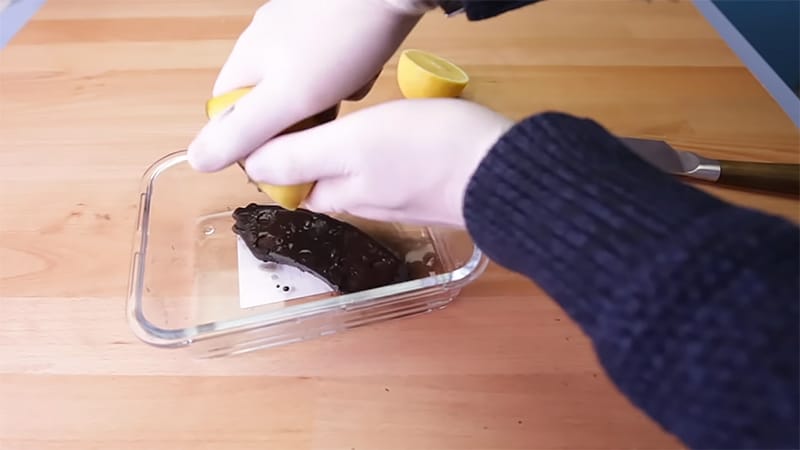
What You’ll Need
- Lime or lemon juice
- Salt
- Scouring pad
- Container
Step 1: Cover Your Tool in Salt
Place your tool in a large plastic container. Pour a hefty amount of salt (regular table salt works just fine) over the surface of your tool.
Step 2: Sprinkle Lime Juice
Sprinkle lemon or lime juice over the salt.
Step 3: Scour
Rub the salt and lime juice into the metal using a metal brush or scouring tool. Don’t be afraid to dig in. You can always use a piece of fine-grit sandpaper to smooth out scratches later.
Step 4: Rinse and Repeat
Rinse and dry your tool to reveal the progress of your rust removal attempts. If rust remains, repeat steps one through four. You may also employ the help of an electric sander, metal paint scraper, or flathead screwdriver.
FAQ
How to get rust off metal?
There are many ways to remove rust from metal. You can use chemical rust removers, sandpaper, a wire brush, or even a potato. Whichever method you choose, make sure to protect your hands and eyes, and work in a well-ventilated area. Once the rust is gone, rinse the metal thoroughly with water and dry it with a clean cloth.
Does mineral oil remove rust?
Mineral oil can remove rust from metal surfaces. First, clean the metal with soap and water to remove any dirt or debris. Next, apply a generous amount of mineral oil to a clean cloth and rub it into the metal in a circular motion. Finally, use a second clean cloth to buff the metal until it shines.
How do you remove rust without chemicals?
There are several ways to remove rust without using chemicals. You can use sandpaper, a wire brush, or even a potato. Whichever method you choose, make sure to protect your hands and eyes, and work in a well-ventilated area. Once the rust is gone, rinse the metal thoroughly with water and dry it with a clean cloth.
How to get rust off mixer beaters?
There are several ways to remove rust from mixer beaters. You can use sandpaper, a wire brush, or even a potato. Whichever method you choose, make sure to protect your hands and eyes, and work in a well-ventilated area. Once the rust is gone, rinse the metal thoroughly with water and dry it with a clean cloth.
Removing rust from drill bits?
There are a variety of ways to remove rust from drill bits. You can use sandpaper, wire brushes or even potatoes! The best way will depend on what kind and where in your piece needs attention but make sure that you protect yourself while working safely outside so as not damage either hardware if possible- heaven forbid something happen because nobody knows how long ago these were used (plus they’re probably pretty dirty). Once everything’s clear go over every inch with clean cloth before storing away again just like new!
Wrapping Up
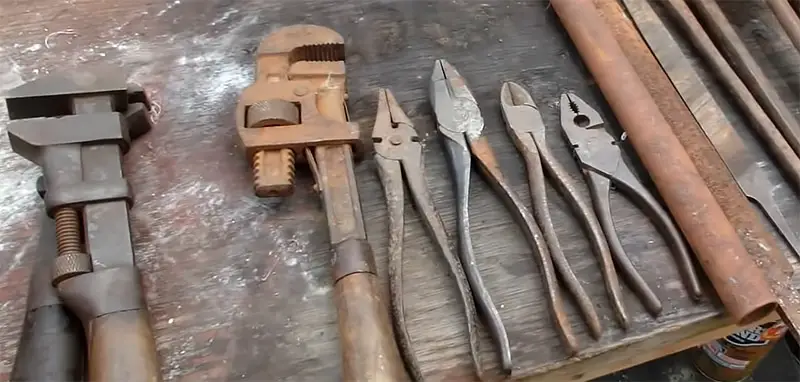
While most metal tools are built to last a lifetime, many succumb to premature wear and tear. One of the leading downfalls of metal tools is iron oxide. This sneaky reaction is caused when iron comes in prolonged contact with oxygen and water. Once you notice a spot or two of reddish-brown flakes, it’s usually only a matter of time before your entire tool collection is covered in rust. Fortunately, you can stop and even reverse some of the damage caused by this common reaction. All it takes is a bit of patience, a little elbow grease, and a few pantry staples.
We hope that this tutorial helped you to reclaim some of the metal contents of your garage or garden shed. Feel free to drop your remaining questions or comments in the section below.
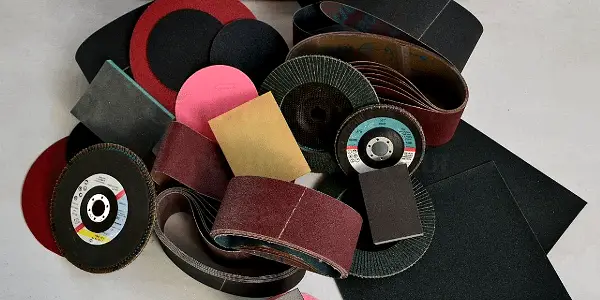

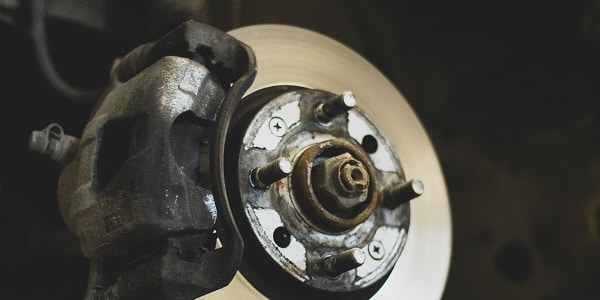
Thank you. I just picked up a large tool box of tools and most need a good derusting. Only $10 .